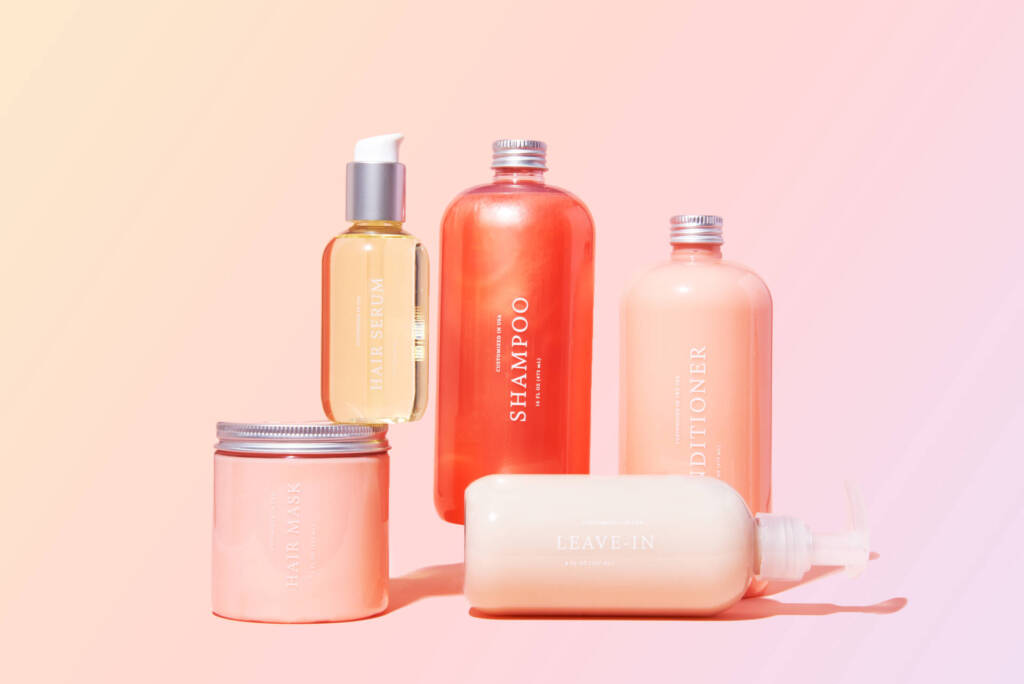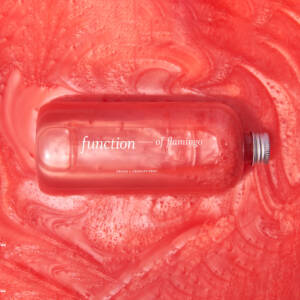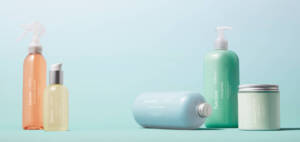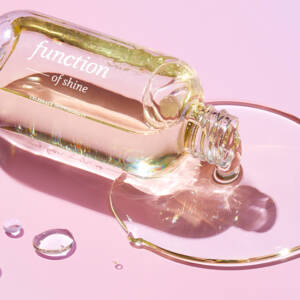In the world of hair care, there are perhaps no ingredients as controversial as sulfates. These synthetic, sulfur-based substances front the ingredient lists of most shampoos, although sulfates may appear in some conditioners, too. But sulfates aren’t restricted to haircare products. You can also find them in skin care (think facial cleansers), body care (cue body washes), and household cleaning products (for example, laundry detergents).
That said, what are sulfates, exactly? Are they really bad for hair? If so, why are sulfates still used in beauty products if they are too much for sensitive skin and fragile fibers? Ahead, we answer your most pressing questions about these ingredients to help you decide if it’s time to go sulfate-free.
What Are Sulfates, Exactly?
Sulfates are basically synthetic surfactants that act as cleansing agents. Sulfates bind to oil, dirt, and product residues before being rinsed away by water to leave your mane squeaky clean.
Some common sulfates present in haircare products include:
- Sodium lauryl sulfate (SLS)
- Sodium laureth sulfate (SLES)
- Ammonium lauryl sulfate (ALS)
- Ammonium laureth sulfate
To understand why sulfates are the dominant class of cleansing agents, we first need to look at the four broad categories of surfactants:
- Anionic surfactants: These negatively charged surfactants are the most powerful cleansing agents, and incidentally, the category that sulfates reside in. Generally used in shampoos, anionic surfactants are the most drying on your scalp and shafts.
- Cationic surfactants: These positively charged surfactants neutralize the negative charge on your strands. In doing so, they smooth down your hair cuticles to minimize frizz and dullness. Cationic surfactants are typically used in conditioners.
- Amphoteric surfactants: These surfactants have positive and negative charges that cancel each other out. Amphoteric surfactants are mild cleansing agents that produce very little lather.
- Nonionic surfactants: These mild surfactants don’t carry any charge. Nevertheless, they still do a fantastic job emulsifying oils and removing them from your scalp and hair.
You now know the answer to “What are sulfates?” Let’s look at how they work in haircare products.
How Sulfates Work in Haircare Products
As surfactants, each sulfate molecule has a water-loving end (hydrophilic) that draws water molecules as well as a water-repelling end (hydrophobic) that attaches to oil-based molecules. Keeping that information in mind, here’s how sulfates work as cleansing agents:
- The water-repelling ends of sulfates attach to natural oils, grime, and product residues to form spheres. Voila! The natural and artificial product buildup previously stuck to your tresses is now trapped in the middle of said spheres.
- The water-loving ends of sulfates fan out so that the spheres look like individual Ferris wheels.
- The moment you turn on the showerhead, the hydrophilic sides of sulfates bind to the water molecules. Water then easily washes away the spheres and buildup from your scalp and hair.
You should also know that sulfates help lower the surface tension of water. In human-speak, this means water can now spread over large surfaces quickly, which speeds up the wetting process. This is why sulfates — and anionic surfactants, in general — are typically known as wetting agents or foaming agents. In fact, anionic surfactants are the best at lathering compared to other types of surfactants.
What Are the Shortcomings of Sulfates?
Although sulfates do a formidable job of clearing buildup from your tresses, there’s been plenty of controversy surrounding them. To start, sulfates were once accused of being carcinogens (cancer-causing substances). Given sulfates’ widespread presence in personal care products, you can imagine the frenzy that followed such news.
The scientific community and Food and Drug Administration (FDA) have since cleared up the misunderstanding, proclaiming sulfates safe for consumer use. Although synthetic sulfates are free of toxicity, some people still steer clear of them, especially for frequently used items like haircare products.
As it turns out, there are a few good reasons why sulfates are not for everyone. Perhaps you’re part of the crowd that has questions like, “Are sulfates bad for hair?” and “Will sulfates dry out my mane?” Keep reading for the tea on some common sulfate setbacks.
They Dry Out Your Scalp and Strands
Sulfates represent too much of a good thing when it comes to cleansing your tresses. These foaming agents are so good at stripping away the natural oils coating your scalp and fibers that they incite dryness from the roots to the tips.
Unfortunately, a too-dry scalp is code for skin irritation, flaking, and itching. Your strands may also become moisture-starved after indulging in a sulfate-based shampoo formulation. And we all know what dry hair is vulnerable to — roughness, brittleness, and never-ending split ends (urgh).
They Aggravate Frizz and Color-Fading
Because sulfates are negatively charged compounds, they hike up the negative charge on the surface of your strands. Unfortunately, this raises the cuticles on your hair shafts, leading to more pores on the outermost layer of your fibers. In this case, your mane just earned a one-way ticket to the nation of high porosity hair.
High porosity hair has a hard time holding onto moisture. The uneven cuticles also give rise to a rougher hair texture. This creates more friction when your strands rub against each other (or against your hair brush). Simply put, your fibers now face a triple threat of dryness, frizz, and roughness, all of which do not bode well for your hair texture.
On a related note, even though sulfates don’t indirectly affect your new dye job, they can speed up color fading through increased hair porosity. Think about it: the more pores on your cuticles, the easier it is for color pigments to diffuse out of your strands. To prolong the longevity of your new hair color, use sulfate-free shampoos specifically designed for color-treated hair.
They Leach Away Natural Hair Proteins
Aside from out-of-control frizz and faded hair colors, sulfates also deplete the natural protein reserves in your fibers. A 2005 study discovered that hair treated with sodium dodecyl sulfate (SDS) “loses seven times more protein” when subjected to friction. What’s more, SDS-immersed hair loses protein two-fold compared to water-submerged hair.
More worryingly, the study highlighted that daily use of such a shampoo formula could eventually erode your cuticles, causing split ends. This spells bad news for hair breakage, especially fragile hair types like those with fine hair or natural hair.
As if that isn’t bad enough, the same study also warned that the more severe the hair damage, the higher the protein loss. In other words, if you subject your color-, chemical-, or heat-treated hair to sulfate-based formulations, you risk doing a number on already distressed strands.
Make the Switch to Sulfate-Free Formulations If Necessary
Whether you want to continue your mane game with products that promise a good lather or switch to sulfate-free options will depend on how agreeable your tresses are with these synthetics.
For those with strands hardy enough to withstand the thorough cleansing sulfate-infused products provide, feel free to continue with them. But if you find your locks too dry, rough, or dull afterward, heed the signs that your mane isn’t a good match. Instead, give your hair a break and switch to sulfate-free formulations.
If you’re on the lookout for sulfate-free products, check out the full haircare range at Function of Beauty. From shampoo and conditioner to our serum and mask, our products are free of sulfates and parabens, plus they’re 100% vegan. You can now look forward to gentle cleansing in the shower, coupled with hair-healthy nourishment.
Start your sulfate-free journey today with our hair quiz.





